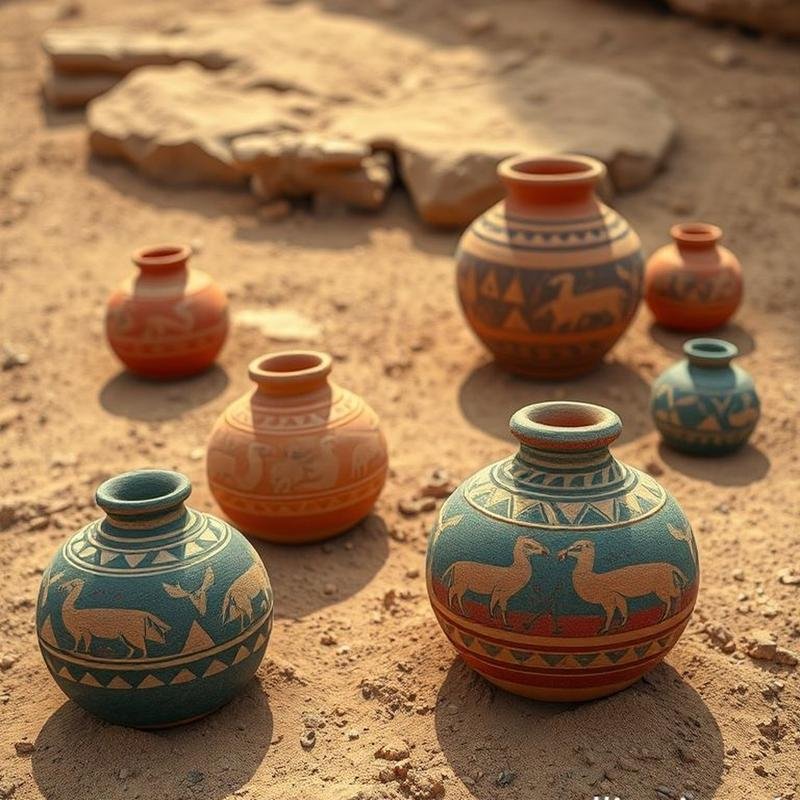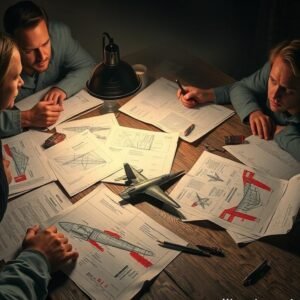Nazca Lines: Messages to the Gods or Extraterrestrial Deception?

Nazca Lines: Mystery, Meaning & Origins
Are these celestial maps or merely terrestrial depictions? This enduring enigma has captivated scholars for decades, inspiring legends and myths. In this episode, we venture into the heart of the Nazca Desert to distinguish fact from fiction, separate ancient rituals from contemporary science fiction, and restore the Nazca Lines to their proper cultural and spiritual context, dispelling extraterrestrial theories.
Before we begin this exploration, share your perspectives in the comments: what mysteries do you believe these lines hold? To ensure you don’t miss the full revelation, subscribe to the channel and follow our expedition.
The Nazca Civilization: A Desert Legacy
In the heart of Peru’s arid desert, under the relentless sun, the Nazca civilization thrived. Between 100 BC and 800 AD, this remarkable society established a unique culture, leaving behind a legacy that continues to inspire awe and intrigue. For the Nazca, the seemingly barren landscape was not a wasteland, but a canvas upon which they built their prosperity and demonstrated their ingenuity.
Ingenious Survival: Water and Agriculture
The Nazca mastered survival in this challenging environment. They ingeniously engineered a complex hydraulic system known as puquios – underground canals that transported vital water from the distant Andes Mountains. This water was essential not only for drinking but also for irrigating their fields, where they cultivated crops such as maize, beans, squash, potatoes, and cotton. Agriculture was the foundation of their existence, and their ability to effectively manage limited resources is a testament to their profound resourcefulness.
Culture and Society: Insights from Pottery
Nazca pottery, adorned with vibrant colors and intricate designs, provides valuable insights into their world and beliefs. These ceramic artifacts depict animals, plants, and mythological beings, reflecting their unique perception of the world around them. Nazca society was hierarchically structured, governed by a class of priests and warriors who controlled resources and labor, guiding their community towards an uncertain future.
The Nazca Lines: Religious and Agricultural Significance
But what is the connection between these aspects and the Nazca Lines? Researchers believe that these geoglyphs were an integral part of religious and agricultural rituals. They may have served as a means of communicating with deities or as a supplication for rain in this arid land. These lines are more than mere drawings; they are an enduring expression of the Nazca worldview and their attempts to influence it.
Construction Techniques: Simplicity and Collaboration
How did they manage to create these colossal works of art? The answer lies in the simplicity of their techniques and the power of community collaboration. Eschewing complex technologies, the Nazca civilization relied on rudimentary surveying methods; stakes and ropes were their primary tools. They removed the top layer of dark gravel, revealing the lighter sand beneath, creating a striking visual contrast.
A Communal Project: Evidence and Evolution
Archaeological reconstructions of these lines have demonstrated the ease of this method. Evidence suggests that the construction of the lines was a communal project, potentially involving entire families and villages, each group responsible for a section of the design. Wooden stakes found along the lines served as guiding markers, while pottery shards indicate accompanying celebrations and community activities during construction and maintenance.
This was not merely a repetition of a fixed design; studies reveal that some figures, particularly those depicting animals, underwent modifications and expansions over time. This dynamic process reflects the ongoing creativity and evolving vision of the Nazca civilization. Miniature models that have been uncovered, likely serving as preliminary sketches, offer a glimpse into the planning and design process that preceded large-scale execution.
Spiritual Dimensions: Maria Reiche’s Perspective
As we contemplate the remarkable engineering techniques, we must also consider the profound spiritual dimension that surrounds the enigmatic Nazca Lines. Maria Reiche, the German mathematician who dedicated her life to studying these lines, viewed them not as mere drawings, but as a vast astronomical calendar, reflecting the cycles of the sun and moon, regulating the lives of an agricultural society dependent on seasonal river flooding. Studies suggest that these lines may have been ritual pathways, sacred routes traversed by believers in solemn processions, imploring deities to bestow water and fertility upon the parched land. Pottery and offerings found near the lines serve as silent witnesses to the sacred nature of this space, where gifts and sacrifices were offered to appease the deities.
Shamanic Symbols and Mountain Worship
The animal figures, from the graceful hummingbird to the playful monkey, carry connotations that transcend mere representation. Some interpret them as shamanic symbols, embodiments of the profound spiritual transformations undergone by shamans in their journey to the spirit world. Remnants of hallucinogenic plants found at the site may provide insights into rituals that involved altered states of consciousness and enhanced communication with the gods. Anthropologist Johan Reinhard connects these lines to the worship of mountains, considered sources of water and life, suggesting that the lines may have been symbolic routes connecting settlements to these sacred mountains.
Astronomical Alignments: A Celestial Calendar?
However, the most compelling hypothesis extends beyond spiritual rituals and connections to the spirit world: astronomical alignments. Could the Nazca Lines be more than artistic or religious expressions? Were they a vast celestial calendar? Maria Reiche, who dedicated over half a century to studying these lines, proposed that some lines align remarkably with the paths of the sun, moon, and planets, suggesting their use as a sophisticated agricultural calendar for tracking seasons and predicting planting and harvesting dates. In-depth studies indicate that some lines coincide perfectly with solstices and equinoxes, revealing an astonishingly advanced astronomical knowledge among the ancient Nazca people. The discovery of plant remains and traces of agriculture near the lines strongly reinforces this idea, suggesting a close connection between these geoglyphs and agriculture, as well as the sacred rituals associated with crops. Astronomer Gerald Hawkins adds another intriguing dimension, suggesting that some lines correspond to the locations of bright stars, potentially indicating their use in tracking stars and determining locations with great accuracy. Archaeologist Anthony Aveni discovered that some lines clearly point to groundwater locations, a crucial discovery that may have played a critical role in managing precious water resources in this arid region.
Space Myths Debunked: No Alien Landing Strips
So, were the animal figures merely artistic expressions, or did they embody symbols of highly accurate astronomical calendars? This leads us to another exploration, examining the space myths that have captivated the imagination of many.
In his controversial book “Chariots of the Gods,” Erich von Däniken boldly questioned whether the Nazca Lines were landing strips for spacecraft or navigational markers left by extraterrestrial beings. However, this captivating idea lacks support from archaeological facts or scientific evidence. No trace of advanced technology, alien spacecraft remnants, or unusual burn marks indicating extraterrestrial intervention has been found. Maria Reiche dedicated her life to proving that these lines are an integral part of a vast astronomical calendar, closely related to agriculture and religious rituals, emphasizing that the ancient Nazca civilization used simple techniques, such as precise land surveying, ropes, and stakes, to draw these lines with astonishing accuracy. In-depth geological studies have confirmed that the area has ideal conditions for creating these geoglyphs, thanks to the layer of dark gravel covering a layer of light sand. NASA itself, in 1977, published a conclusive report refuting von Däniken’s theory, asserting that the Nazca Lines can be fully explained by the knowledge and techniques available to the ancient Nazca civilization.
Threats and Preservation: A Heritage at Risk
Ancient wooden stakes discovered at the site raise the question: can such a great heritage be lost? Yes, it faces numerous threats. The Nazca Desert, in its harshness, is not immune to the effects of climate change. Devastating floods, caused by the El Niño phenomenon, relentlessly erode these geoglyphs, damaging their intricate details. The Pan-American Highway, a vital artery connecting the continent, crosses a portion of the site, and the constant traffic increases vibrations and pollution. The tragic truck accident that penetrated the restricted area in 2014 serves as a stark warning.
Hope for the Future: UNESCO and Sustainable Tourism
However, hope remains. UNESCO’s declaration of the Nazca Lines as a World Heritage Site was a pivotal turning point. The ambitious Nazca-Palpa Project, led by Jose Orefici, utilizes the latest technologies to create detailed and accurate maps and assess the damage caused. The Peruvian Ministry of Culture is working closely with local communities to develop sustainable tourism, providing meaningful employment opportunities while protecting the precious site.
Conclusion: A Window to the Past
The Nazca Lines, a window to the past and a mirror of civilization, extend over an area of 450 square kilometers, silently witnessing the greatness of the Nazca civilization, which flourished between 500 BC and 500 AD. They are not simple drawings, but a visual record of a vibrant life, encompassing over 800 straight lines, 300 geometric shapes, and 70 drawings of animals and plants, each carrying a story waiting to be told. The journey of Maria Reiche, who dedicated over half a century to studying and protecting these lines, reminds us of the importance of preserving this unique human legacy. She was not just a researcher, but a faithful guardian of this hidden treasure, viewing it as a vast astronomical calendar, a window into the Nazca’s deep understanding of the universe. Modern studies reveal that these lines were an integral part of their sacred religious rituals, especially those related to water and fertility, in a society that long suffered from drought. The remains of broken pottery found near some of the lines whisper tales of solemn ritual celebrations, embodying their close connection to the earth and the sky. UNESCO’s inclusion of the Nazca








